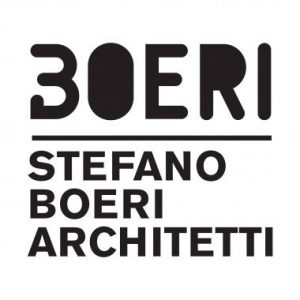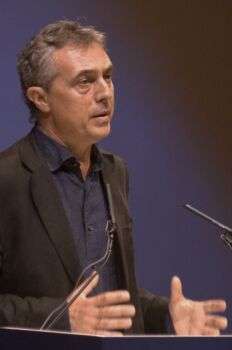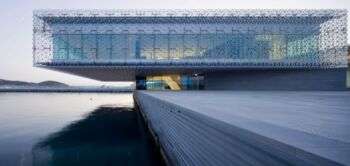Stefano Boeri Architetti is a studio founded in Milan, around 2008. Specialized in sustainable architecture, development and research, it has become an international inspiration for all applicants in the field. Its relevance is recognized by the architectural community worldwide, and has earned its members many International Awards.
About Stefano Boeri Architetti
Stefano Boeri Architetti has been providing services in Architecture and Urban Design for over twenty years, focusing on large scale projects and Urban Renewal. Nevertheless, it also operates in the cultural and social design fields to develop innovative solutions for a wide range of territorial and socio-economical contexts. Namely, “Multiplicity” is a research group focused on territorial investigation that leads the multifaceted activity of the Studio, lending it a strongly defined identity. Stefano Boeri Architetti has acquired international relevance for Sustainable Architecture and Urban Regeneration thanks to a high-level team of professionals, often engaging in a multidisciplinary dialogue between engineering consultants, landscape architects, agronomists and social scientists.

Image source:https://www.azacorp.com/3-2-logo-stefano-boeri/
Stefano Boeri
Stefano Boeri, the studio founder, is an Italian architect and urban planner, born in Milan in 1956. After graduating in Architecture at the Polytechnic University of Milan in 1980 and a PhD in Territorial Planning from Iuav University of Venice, in 1989, he became – alongside starting his career as an architect – a fully certified professor of Urban Planning, at the prestigious Polytechnic University of Milan, being invited as well as a guest professor by many International Universities such as Harvard Graduate School of Design and Columbia University.
He founded Boeri Studio in 1999 with Gianandrea Barreca and Giovanni La Varra, turning it into Stefano Boeri Architetti Studio in 2008, entering a partnership with Michele Brunello. He advanced in his career conceiving and curating the MI/ARCH initiative “Milan World Capital of Architecture” on the occasion of the 150th anniversary of the Polytechnic University.

Image source: https://en.wikipedia.org/wiki/Stefano_Boeri#/media/File:Stefano_Boeri-Stati_Generali_Expo_2015.jpg
Vertical Forest
The coexistence of architecture and nature in Urban Planning led Boeri to create Vertical Forest, a sustainable, residential building complex with facades covered in trees and plants. It is a model of metropolitan reforestation, that conceives vegetation as an essential element of architecture; it serves to promote the formation of an urban ecosystem through the vertical densification of greenery. The first example of Vertical Forest was inaugurated in October 2014 in Milan, in the Porta Nuova Isola area. It consists of two residential towers of 110 m and 76 m height which host 800 trees , 4500 shrubs and 15000 plants. The diversity of vegetation helps to develop the microclimate producing oxygen, absorbing CO2 and protecting against pollution. Vertical Forest has been the winner of the Best Tall Building Worldwide Award in 2015 for its extraordinary implementation of vegetation at such scale and height.

Image source: https://search.creativecommons.org/photos/b9f16691-84b7-42d9-acab-f02f725e1c41 by 準建築人手札網站 Forgemind ArchiMedia
Villa Méditerranée
Villa Mèditerranèe is a public building inaugurated in Marsille in 2013, as a place of interaction between the different cultures of the Mediterranean Sea. Its opening coincided with Marseille’s nomination as European Capital of Culture 2013. The building overlooks the port and it rises on a water square which symbolizes the central element of the project – that is, the sea. Boeri resumes it as “a place of thought and research that physically embraces the sea”. Covering almost 9,000 square meters , the building hosts research activities and documentation spaces on the Mediterranean. Its structure is a mix of reinforced concrete and steel with glazing added across the front and rear elevations., its facades relating to different portions of the surrounding landscape: the front, which faces the city, is sober and elegant, while the one towards the sea is modernist.

Image source: https://www.domusweb.it/it/architettura/2013/04/03/una-dimora-per-la-cultura-mediterranea.html
House of the Sea at La Maddalena
The House of the Sea building is composed by two overlapped rectangular elements of different sizes. It’s a restructuring project designed to realize a public and complex space surrounding the harbor of the ex military Arsenale. The 2000 square meters construction is placed along the quay and it’s composed by a rhomboidal glass volume on the ground floor. on the top there is a larger square body which looks out towards the sea and it’s suspended 6 meters above water. The architectural form is a reference to the traditional military buildings which usually allow the occupants to see without being seen. The interior design is realized with high quality italian materials and the spaces are able to host meeting rooms, conferences, events and exhibitions. They also guarantee a strong visual relationship with the surrounding landscape and the other activities within the Arsenale.

Info sources:
https://miesarch.com/work/2871
https://www.stefanoboeriarchitetti.net/en/project/houseofthesea/
https://www.stefanoboeriarchitetti.net/en/stefano-boeri-biography/
https://www.stefanoboeriarchitetti.net/en/about/
https://www.stefanoboeriarchitetti.net/en/project/villa-mediterranee/
https://www.greenroofs.com/projects/bosco-verticale-vertical-forest-milan/
https://www.archdaily.com/777498/bosco-verticale-stefano-boeri-architetti
